New York Guard is the State Defense Force of New York State. As of June 2008, the New York Guard, a 

recognized command under the New York State's Military law, has line-item funding in the state budget.7th regt nyc

Now with a unified command structure, formerly the organization contained an Army Division and an Air Division. 

The missions of the New York Guard include augmentation, assistance, and support of the New York Army 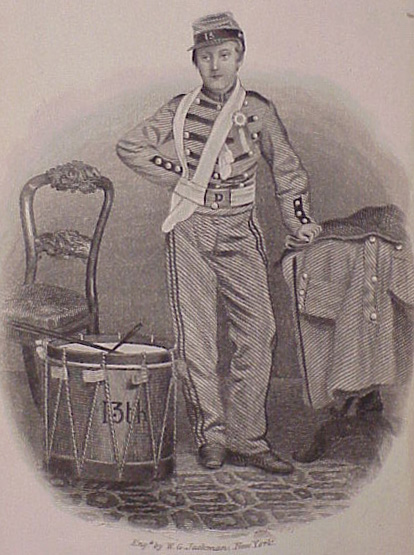

National Guard and New York Air National Guard respectively and aide to civil authorities in New York State. New 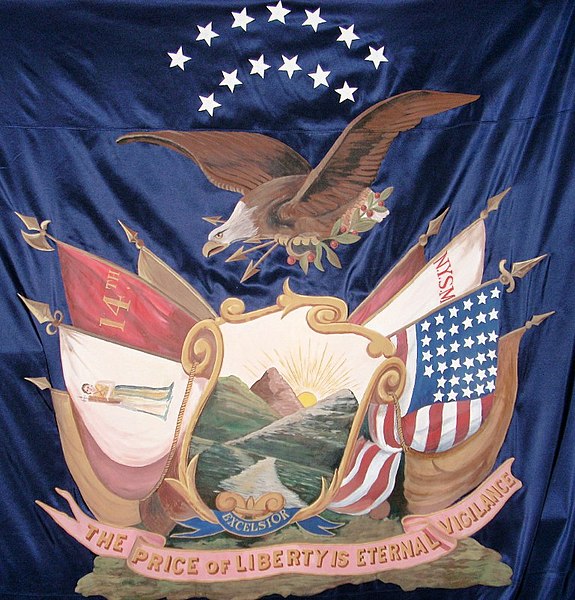

York also has a New York Naval Militia which, with the State Guard and the Army and Air National Guards,

is under the command of the Governor of New York, the Adjutant General, and New York's Division of Military and
The sculpting of these little 54 mm soldiers is very pleasing to the eye and I would have to  call them more cute than accurate, and in this instance cute is just fine.
call them more cute than accurate, and in this instance cute is just fine.  The anatomy of this set is very nice though photos of some of the figures in the Confederate
The anatomy of this set is very nice though photos of some of the figures in the Confederate  sets show poses that are quite stilted and unnatural.they are safari ltd and you can paint them in nyc regt or militia colours below upnaway
sets show poses that are quite stilted and unnatural.they are safari ltd and you can paint them in nyc regt or militia colours below upnaway
 The anatomy of this set is very nice though photos of some of the figures in the Confederate
The anatomy of this set is very nice though photos of some of the figures in the Confederate  sets show poses that are quite stilted and unnatural.they are safari ltd and you can paint them in nyc regt or militia colours below upnaway
sets show poses that are quite stilted and unnatural.they are safari ltd and you can paint them in nyc regt or militia colours below upnaway
Naval Affairs (DMNA). The New York State Guard is one of the largest and best organized *below 14th brooklyn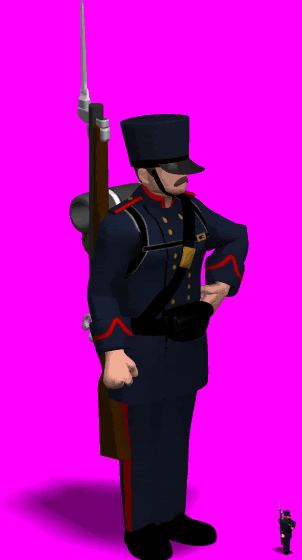

State Guards in the United States and is historically derived from Revolutionary and Civil War era State military units that were 

reorganized several times in American history in response to various international and domestic crises.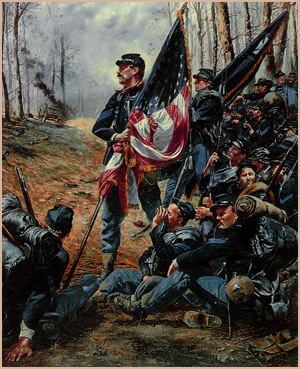

Organized under the Military Law, State of New York, the New York Guard cannot be federalized and cannot be 

deployed outside New York State without the consent of the governor.Gentile photo above, Gentile has a blog bout the civil war go read it.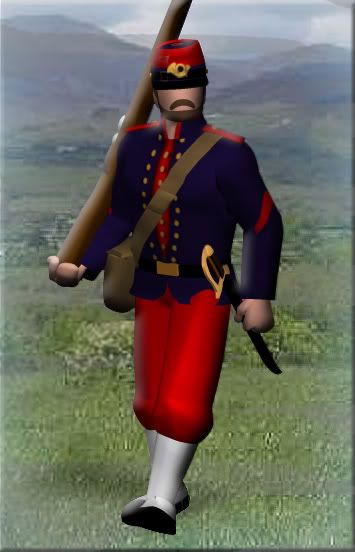

Members of the New York Guard are entitled to many of the benefits accorded members of other
 components of the 'Organized Militia of the State of New York,' the legal collective term describing the New York Army and Air
components of the 'Organized Militia of the State of New York,' the legal collective term describing the New York Army and Air 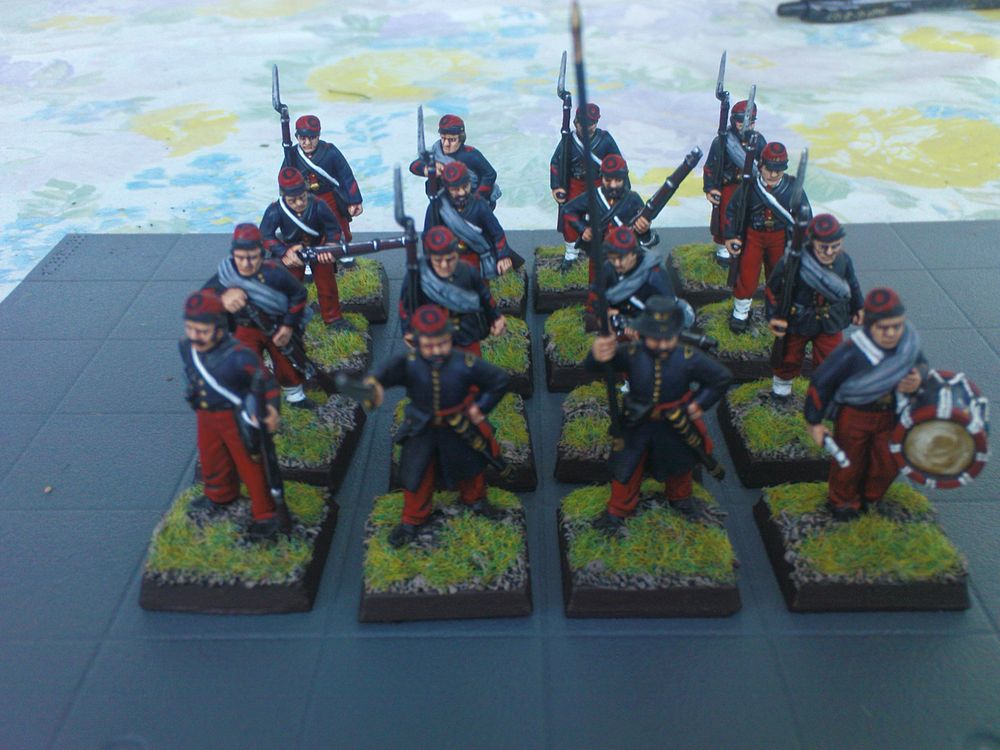

National Guards, New York Naval Militia and New York Guard. These include 'military leave' for employees of state or local governments and many private employersWith the advent of the Civil War in April, 1861, the 14th regiment saw its first war service in guarding the Brooklyn Navy Yard. 

NY Highlanders (Cameron Highlanders), skirmishers, 1st Bull Run, July 21st, 1861. Contains 2 figures & scenic base. Box art by Ric Fenner.he 79th New York Cameron Highlanders Regiment was a militia unit formed of Scottish immigrants living in New York City (Manhattan Island) in 1859.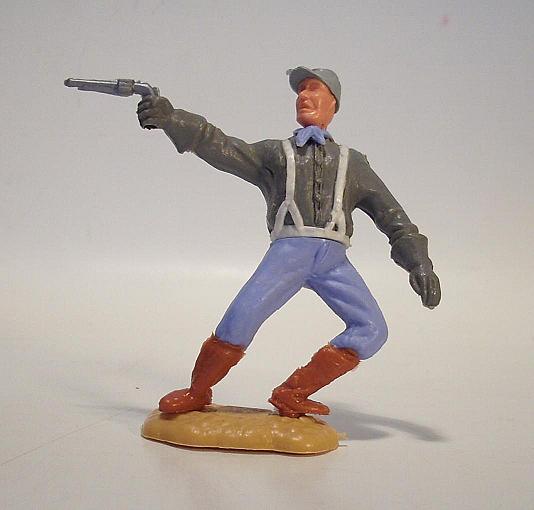 They experienced some of the fiercest fighting and suffered some of the highest Union casualties at 1st Manassas. The 79th Glengarry went through uniform changes during the Civil War (no less than five changes throughout the war!): kilts, trews, doublets, state jackets.sack coats, kepis, etc. Our kit was painted in the tartan pattern trews, but the trousers can be painted in sky blue or dark blue & still maintain historical accuracy.
They experienced some of the fiercest fighting and suffered some of the highest Union casualties at 1st Manassas. The 79th Glengarry went through uniform changes during the Civil War (no less than five changes throughout the war!): kilts, trews, doublets, state jackets.sack coats, kepis, etc. Our kit was painted in the tartan pattern trews, but the trousers can be painted in sky blue or dark blue & still maintain historical accuracy.
 They experienced some of the fiercest fighting and suffered some of the highest Union casualties at 1st Manassas. The 79th Glengarry went through uniform changes during the Civil War (no less than five changes throughout the war!): kilts, trews, doublets, state jackets.sack coats, kepis, etc. Our kit was painted in the tartan pattern trews, but the trousers can be painted in sky blue or dark blue & still maintain historical accuracy.
They experienced some of the fiercest fighting and suffered some of the highest Union casualties at 1st Manassas. The 79th Glengarry went through uniform changes during the Civil War (no less than five changes throughout the war!): kilts, trews, doublets, state jackets.sack coats, kepis, etc. Our kit was painted in the tartan pattern trews, but the trousers can be painted in sky blue or dark blue & still maintain historical accuracy.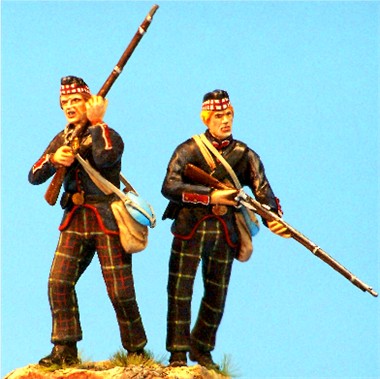
The 14th Regiment New York State Militia (also called the 14th Brooklyn) was a volunteer militia regiment from the City of Brooklyn, 
New York. It is primarily known for its service in the American Civil War from April 1861 to May
above different zouaves you can use to model nyc militia or guards, photo gentile
1864, although it later served in the Spanish American War and World War I (as part of the 106th Regiment).dutkins sell new hope design nyc militia

New York. It is primarily known for its service in the American Civil War from April 1861 to May

above different zouaves you can use to model nyc militia or guards, photo gentile
1864, although it later served in the Spanish American War and World War I (as part of the 106th Regiment).dutkins sell new hope design nyc militia

In the Civil War, the regiment was made up of a majority of abolitionists from the Brooklyn area. It was led first by ColonelAlfred M. Wood and later by Colonel Edward Brush Fowler. The 14th Brooklyn was involved in heavy fighting, including most major engagements of the Eastern Theater.
The 14th Brooklyn was involved in heavy fighting, including most major engagements of the Eastern Theater.  Their engagements included the First and Second Battles of Bull Run, the Battle of Antietam, below is the new hope design og the nyc militia
Their engagements included the First and Second Battles of Bull Run, the Battle of Antietam, below is the new hope design og the nyc militia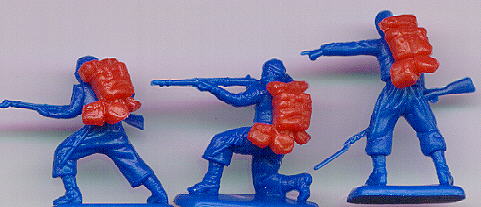 Private, 12th New YorkState, this in metal but like the other metal figures here you can convert with ease the figures in plastic, this is as regards taking a standard model in plastic and converting it to these uniforms.above hat conversion
Private, 12th New YorkState, this in metal but like the other metal figures here you can convert with ease the figures in plastic, this is as regards taking a standard model in plastic and converting it to these uniforms.above hat conversion Fredericksburg, Chancellorsville,
Fredericksburg, Chancellorsville, Gettysburg, The Wilderness,
Gettysburg, The Wilderness, and Spotsylvania Court House.
and Spotsylvania Court House. During the war, the men of the 14th Brooklyn were well known by both armies and throughout the country for their hard drill, hard fighting, and constant refusal to stand down from a fight.
During the war, the men of the 14th Brooklyn were well known by both armies and throughout the country for their hard drill, hard fighting, and constant refusal to stand down from a fight. above hat zouaves, cut off the head and replace with kepi , then paint job
above hat zouaves, cut off the head and replace with kepi , then paint job
 The 14th Brooklyn was involved in heavy fighting, including most major engagements of the Eastern Theater.
The 14th Brooklyn was involved in heavy fighting, including most major engagements of the Eastern Theater.  Their engagements included the First and Second Battles of Bull Run, the Battle of Antietam, below is the new hope design og the nyc militia
Their engagements included the First and Second Battles of Bull Run, the Battle of Antietam, below is the new hope design og the nyc militia Private, 12th New YorkState, this in metal but like the other metal figures here you can convert with ease the figures in plastic, this is as regards taking a standard model in plastic and converting it to these uniforms.above hat conversion
Private, 12th New YorkState, this in metal but like the other metal figures here you can convert with ease the figures in plastic, this is as regards taking a standard model in plastic and converting it to these uniforms.above hat conversion Fredericksburg, Chancellorsville,
Fredericksburg, Chancellorsville, Gettysburg, The Wilderness,
Gettysburg, The Wilderness, and Spotsylvania Court House.
and Spotsylvania Court House. During the war, the men of the 14th Brooklyn were well known by both armies and throughout the country for their hard drill, hard fighting, and constant refusal to stand down from a fight.
During the war, the men of the 14th Brooklyn were well known by both armies and throughout the country for their hard drill, hard fighting, and constant refusal to stand down from a fight. above hat zouaves, cut off the head and replace with kepi , then paint job
above hat zouaves, cut off the head and replace with kepi , then paint job
During their three years of service they never withdrew from battle in unorderly fashion.

On December 7, 1861, the State of New York officially changed the regiment's designation to the 84th New York Volunteer Infantry (and its unit histories are sometimes found under this designation).  But at the unit's request and because of the fame attained by the unit at First Bull Run, the United States Army continued to refer to it as the 14th.above upnaway
But at the unit's request and because of the fame attained by the unit at First Bull Run, the United States Army continued to refer to it as the 14th.above upnaway
 But at the unit's request and because of the fame attained by the unit at First Bull Run, the United States Army continued to refer to it as the 14th.above upnaway
But at the unit's request and because of the fame attained by the unit at First Bull Run, the United States Army continued to refer to it as the 14th.above upnaway
The 14th Brooklyn received its nickname, the "Red Legged Devils", during the First Battle of Bull Run. Referring to the regiment's colorful red trousers as the regiment repeatedly charged up Henry House Hill, above upnaway metal
Referring to the regiment's colorful red trousers as the regiment repeatedly charged up Henry House Hill, above upnaway metal Confederate General Thomas J. "Stonewall" Jackson yelled to his men, "Hold On Boys! Here come those red legged devils again!" below 5th nyc zouaves
Confederate General Thomas J. "Stonewall" Jackson yelled to his men, "Hold On Boys! Here come those red legged devils again!" below 5th nyc zouaves
 Referring to the regiment's colorful red trousers as the regiment repeatedly charged up Henry House Hill, above upnaway metal
Referring to the regiment's colorful red trousers as the regiment repeatedly charged up Henry House Hill, above upnaway metal Confederate General Thomas J. "Stonewall" Jackson yelled to his men, "Hold On Boys! Here come those red legged devils again!" below 5th nyc zouaves
Confederate General Thomas J. "Stonewall" Jackson yelled to his men, "Hold On Boys! Here come those red legged devils again!" below 5th nyc zouaves
In the early part of the war, when the 14th Brooklyn was in General Walter Phelps' brigade, the brigade was named "Iron Brigade". It would later to become known as the "Eastern Iron Brigade" after John Gibbon's 
above is ellsworths regt but the look is basically nyc guards.
Black Hat Brigade was given the name "Western Iron Brigade". At the conclusion of the war, all members of the "Eastern" or "First" Iron Brigade were given medals for their service within the Iron Brigade.
By mid-April of that year, the "Brooklyn Chasseurs" were ready to leave New York for Washington D.C. Colonel Alfred Wood advised the Honorable Governor Morgan
above is ellsworths regt but the look is basically nyc guards.
Black Hat Brigade was given the name "Western Iron Brigade". At the conclusion of the war, all members of the "Eastern" or "First" Iron Brigade were given medals for their service within the Iron Brigade.


that the regiment was prepared to march and had accepted a three year federal enlistment. However, the governor would not issue orders for the regiment to leave New York. While encamped at Fort Greene Park in Brooklyn ,above upnaway
the governor would not issue orders for the regiment to leave New York. While encamped at Fort Greene Park in Brooklyn ,above upnaway Colonel Wood and Congressman Moses O'Dell went to see President Lincoln to secure orders for the regiment to march to Washington. President Lincoln lost no time in issuing those orders to the 14th
Colonel Wood and Congressman Moses O'Dell went to see President Lincoln to secure orders for the regiment to march to Washington. President Lincoln lost no time in issuing those orders to the 14th  Brooklyn. When Governor Morgan learned that the regiment was preparing to march, he telegraphed Colonel Wood and inquired "by what authority" did he move his regiment, Colonel Wood coolly replied, "By the authority of the President of the United States. The timpos above pasinted by the great gunner upnaway can be painted to resemble NYC troops.
Brooklyn. When Governor Morgan learned that the regiment was preparing to march, he telegraphed Colonel Wood and inquired "by what authority" did he move his regiment, Colonel Wood coolly replied, "By the authority of the President of the United States. The timpos above pasinted by the great gunner upnaway can be painted to resemble NYC troops.
 the governor would not issue orders for the regiment to leave New York. While encamped at Fort Greene Park in Brooklyn ,above upnaway
the governor would not issue orders for the regiment to leave New York. While encamped at Fort Greene Park in Brooklyn ,above upnaway Colonel Wood and Congressman Moses O'Dell went to see President Lincoln to secure orders for the regiment to march to Washington. President Lincoln lost no time in issuing those orders to the 14th
Colonel Wood and Congressman Moses O'Dell went to see President Lincoln to secure orders for the regiment to march to Washington. President Lincoln lost no time in issuing those orders to the 14th  Brooklyn. When Governor Morgan learned that the regiment was preparing to march, he telegraphed Colonel Wood and inquired "by what authority" did he move his regiment, Colonel Wood coolly replied, "By the authority of the President of the United States. The timpos above pasinted by the great gunner upnaway can be painted to resemble NYC troops.
Brooklyn. When Governor Morgan learned that the regiment was preparing to march, he telegraphed Colonel Wood and inquired "by what authority" did he move his regiment, Colonel Wood coolly replied, "By the authority of the President of the United States. The timpos above pasinted by the great gunner upnaway can be painted to resemble NYC troops.
New York City was a bustling American city that provided a major source of troops, supplies, and equipment for the Union Army. Powerful New York politicians and newspaper editors helped shape public opinion towards the war effort and the policies of President Abraham Lincoln. The port of New York served as fertile recruiting grounds for the Army as immigrants from Europe (primarily Irish and Germans) at times stepped off the oceanic transports and into the muster rolls.

The city's strong commercial ties to the South, its growing immigrant population, and anger about conscription led to divided sympathy for both the Union and Confederacy, culminating in the Draft Riots of 1863, one of the worst incidents of civil unrest in American histo The New York City draft riots (July 13 to July 16, 1863; were violent disturbances in New York City that were the culmination of discontent with new laws passed by Congress to draft men to fight in the ongoing American Civil War. The riots were the largest civil insurrection in American history apart from the Civil War itself.President Abraham Lincoln sent several regiments of militia and volunteer troops to control the city.
The New York City draft riots (July 13 to July 16, 1863; were violent disturbances in New York City that were the culmination of discontent with new laws passed by Congress to draft men to fight in the ongoing American Civil War. The riots were the largest civil insurrection in American history apart from the Civil War itself.President Abraham Lincoln sent several regiments of militia and volunteer troops to control the city. The rioters were overwhelmingly working class men, resentful, among other reasons, because the draft unfairly affected them while sparing wealthier men, who could afford to pay a $300 commutation fee to exclude themselves from its reach.
The rioters were overwhelmingly working class men, resentful, among other reasons, because the draft unfairly affected them while sparing wealthier men, who could afford to pay a $300 commutation fee to exclude themselves from its reach.
 The New York City draft riots (July 13 to July 16, 1863; were violent disturbances in New York City that were the culmination of discontent with new laws passed by Congress to draft men to fight in the ongoing American Civil War. The riots were the largest civil insurrection in American history apart from the Civil War itself.President Abraham Lincoln sent several regiments of militia and volunteer troops to control the city.
The New York City draft riots (July 13 to July 16, 1863; were violent disturbances in New York City that were the culmination of discontent with new laws passed by Congress to draft men to fight in the ongoing American Civil War. The riots were the largest civil insurrection in American history apart from the Civil War itself.President Abraham Lincoln sent several regiments of militia and volunteer troops to control the city. The rioters were overwhelmingly working class men, resentful, among other reasons, because the draft unfairly affected them while sparing wealthier men, who could afford to pay a $300 commutation fee to exclude themselves from its reach.
The rioters were overwhelmingly working class men, resentful, among other reasons, because the draft unfairly affected them while sparing wealthier men, who could afford to pay a $300 commutation fee to exclude themselves from its reach.
Initially intended to express anger at the draft, the protests turned ugly and degraded into "a virtual racial pogrom, with uncounted numbers of blacks murdered on the streets". The conditions in the city were such that Major General John E. Wool stated on July 16,

"Martial law ought to be proclaimed, but I have not a sufficient force to enforce it."The military suppressed the mob using artillery and fixed bayonets, but not before numerous buildings were ransacked or destroyed, including many homes and an orphanage for black children.New York City had long been the largest, and in many ways, most influential city in the United States. Already a melting pot by 1860 of divergent cultures, views, opinions, and politics. As Southern states began seceding with the election of Lincoln, New Yorkers in general supported the war effort, but there were several notable early exceptions. MayorFernando Wood won reelection to a second 

term, serving from 1860–62. He was one of many New York Democrats who were sympathetic to the Confederacy, called 'Copperheads' by staunch Unionists.Copperheadism was a highly contentious grassroots movement, strongest in the area just north of the Ohio River, as well as some urban ethnic wards

. Some historians have argued that it represented a traditionalistic element alarmed at the rapid modernization of society sponsored by the Republican Party, and looked back to Jacksonian Democracyfor inspiration. Weber (2006) argues that the Copperheads damaged the Union war effort by fighting the draft, encouraging desertion, and forming conspiracies, but other historians say the draft was in disrepute and that the Republicans greatly 

exaggerated the conspiracies for partisan reasons. Historians agree that the Copperheads' goal of negotiating a peace and restoring the Union with slavery was naive and impractical, for the Confederates refused to consider giving up their independence. Copperheadism was a major issue in the 1864 presidential election; its strength waxed when Union armies were doing poorly, and waned when they won great victories. After the fall of Atlanta in September 1864 military success seemed assured, and Copperheadism collapsed
In January 1861, Wood suggested to the City Council that New York City secede and declare itself a free city, to continue its profitable cotton trade with the Confederacy. Wood's Democratic machine was concerned to maintain the revenues (which depended on Southern cotton) that maintained the patronage systeoccurred peaceably, although the draft coincided with efforts by Tammany Hall to enroll immigrants, particularly from Ireland, who already spoke English, as U.S. citizens so they could vote in local elections. Many of these soon learned they were also expected to enroll in the draft to fight for their new country.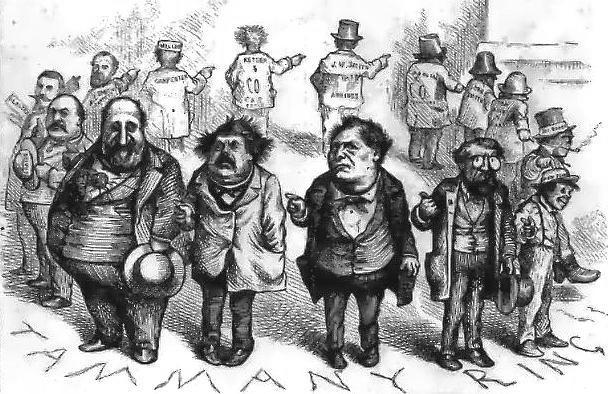

The second drawing was held on Monday, July 13, 1863, ten days after the Union victory at Gettysburg. At 10 a.m., a furious crowd of around 500, led by the Black Joke Engine Company 33, attacked the assistant Ninth District Provost Marshal's Office, at Third Avenue and 47th Street, where the draft was taking place. The crowd threw large paving stones through windows, then burst through the doors and set the building ablaze. Many of the rioters were Irish laborers who did not want to compete with emancipated slaves for jobs.
where the draft was taking place. The crowd threw large paving stones through windows, then burst through the doors and set the building ablaze. Many of the rioters were Irish laborers who did not want to compete with emancipated slaves for jobs.
 where the draft was taking place. The crowd threw large paving stones through windows, then burst through the doors and set the building ablaze. Many of the rioters were Irish laborers who did not want to compete with emancipated slaves for jobs.
where the draft was taking place. The crowd threw large paving stones through windows, then burst through the doors and set the building ablaze. Many of the rioters were Irish laborers who did not want to compete with emancipated slaves for jobs.
Since the New York State Militia had been sent to assist Union troops in Pennsylvania, the police were left to suppress the riots]The police superintendent, John A. Kennedy,  came by on Monday to check on the situation. Although not in uniform, he was recognized by people in the mob and they attacked him. Kennedy was left nearly unconscious, having had his face bruised and cut, an injured eye, swelled lips, his hand cut with a knife, and a mass of bruises and blood all over his body. In response, police drew theirclubs and revolvers, and charged the crowd, but the crowd overpowered them.The police forces were badly outnumbered and unable to quell the riots; however, they were able to keep the rioting out of Lower Manhattan,
came by on Monday to check on the situation. Although not in uniform, he was recognized by people in the mob and they attacked him. Kennedy was left nearly unconscious, having had his face bruised and cut, an injured eye, swelled lips, his hand cut with a knife, and a mass of bruises and blood all over his body. In response, police drew theirclubs and revolvers, and charged the crowd, but the crowd overpowered them.The police forces were badly outnumbered and unable to quell the riots; however, they were able to keep the rioting out of Lower Manhattan,  below Union Square.Immigrants and others in the "Bloody Sixth" Ward, around the seaport, refrained from getting involved in the Draft Riots.
below Union Square.Immigrants and others in the "Bloody Sixth" Ward, around the seaport, refrained from getting involved in the Draft Riots.
 came by on Monday to check on the situation. Although not in uniform, he was recognized by people in the mob and they attacked him. Kennedy was left nearly unconscious, having had his face bruised and cut, an injured eye, swelled lips, his hand cut with a knife, and a mass of bruises and blood all over his body. In response, police drew theirclubs and revolvers, and charged the crowd, but the crowd overpowered them.The police forces were badly outnumbered and unable to quell the riots; however, they were able to keep the rioting out of Lower Manhattan,
came by on Monday to check on the situation. Although not in uniform, he was recognized by people in the mob and they attacked him. Kennedy was left nearly unconscious, having had his face bruised and cut, an injured eye, swelled lips, his hand cut with a knife, and a mass of bruises and blood all over his body. In response, police drew theirclubs and revolvers, and charged the crowd, but the crowd overpowered them.The police forces were badly outnumbered and unable to quell the riots; however, they were able to keep the rioting out of Lower Manhattan,  below Union Square.Immigrants and others in the "Bloody Sixth" Ward, around the seaport, refrained from getting involved in the Draft Riots.
below Union Square.Immigrants and others in the "Bloody Sixth" Ward, around the seaport, refrained from getting involved in the Draft Riots.
The Bull's Head hotel on 44th Street, which refused to provide alcohol, was burned.

The mayor's residence on Fifth Avenue, the Eighth and Fifth District police stations, and other buildings were attacked and set on fire.

Other targets included the office of the leadingRepublican newspaper, the New York Tribune. The mob was turned back at the Tribune office by staff manning two Gatling guns.

Fire engine companies responded, but some of the firefighters were sympathetic to the rioters, since they too had been drafted on Saturday. Later in the afternoon, authorities shot and killed a man as a crowd attacked the Armory at Second Avenue and 21st Street.

.Blacks became scapegoats and the primary target of the rioters' anger. Many immigrants and the poor viewed freed slaves as competition for scarce jobs. Blacks were also seen as the cause of the Civil War and any who fell into the clutches of the mobs were beaten, tortured and/or killed, including one man who was attacked by a crowd of 400 with clubs and paving stones, then hanged from a tree and set alight. The Colored Orphan Asylum on Fifth Avenue,  which provided shelter for hundreds of children, was attacked by a mob. The police were able to secure the
which provided shelter for hundreds of children, was attacked by a mob. The police were able to secure the  orphanage for enough time to allow the orphans to escape.
orphanage for enough time to allow the orphans to escape.
 orphanage for enough time to allow the orphans to escape.
orphanage for enough time to allow the orphans to escape.
Heavy rain fell on Monday night, helping to abate the fires and sending rioters home, but the crowd returned the next day. Commerce in the city was halted, with workers joining the crowd.Rioters went after the homes of notable Republicans, including activist Abby Hopper Gibbons, among others. Governor Horatio Seymour arrived on Tuesday and spoke at City Hall, where he attempted to assuage the crowd by proclaiming the Conscription Act was unconstitutional. General John E. Wool brought approximately 800 troops in from forts in the New York Harbor and from West Point. He also ordered the militias to return to New York.
among others. Governor Horatio Seymour arrived on Tuesday and spoke at City Hall, where he attempted to assuage the crowd by proclaiming the Conscription Act was unconstitutional. General John E. Wool brought approximately 800 troops in from forts in the New York Harbor and from West Point. He also ordered the militias to return to New York.
 among others. Governor Horatio Seymour arrived on Tuesday and spoke at City Hall, where he attempted to assuage the crowd by proclaiming the Conscription Act was unconstitutional. General John E. Wool brought approximately 800 troops in from forts in the New York Harbor and from West Point. He also ordered the militias to return to New York.
among others. Governor Horatio Seymour arrived on Tuesday and spoke at City Hall, where he attempted to assuage the crowd by proclaiming the Conscription Act was unconstitutional. General John E. Wool brought approximately 800 troops in from forts in the New York Harbor and from West Point. He also ordered the militias to return to New York.
The situation improved on Wednesday, when assistant provost-marshal-general Robert Nugent received word from his superior officer, Colonel James Barnet Fry,  to suspend the draft. As this news appeared in newspapers, some rioters stayed home. But some of the militias began to return and used harsh measures against the remaining mobs.9th nyc guard 1860
to suspend the draft. As this news appeared in newspapers, some rioters stayed home. But some of the militias began to return and used harsh measures against the remaining mobs.9th nyc guard 1860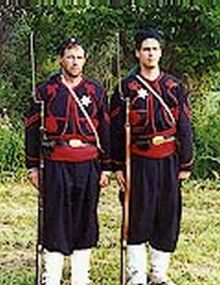
 to suspend the draft. As this news appeared in newspapers, some rioters stayed home. But some of the militias began to return and used harsh measures against the remaining mobs.9th nyc guard 1860
to suspend the draft. As this news appeared in newspapers, some rioters stayed home. But some of the militias began to return and used harsh measures against the remaining mobs.9th nyc guard 1860
Order began to be restored on Thursday, after a peaceful rally of 5,000 at Old St. Patrick's Cathedral to hear  Archbishop Hughes, and as New York State militia and some federal troops returned to New York, including the
Archbishop Hughes, and as New York State militia and some federal troops returned to New York, including the 152nd New York Volunteers, the 26th Michigan Volunteers,
152nd New York Volunteers, the 26th Michigan Volunteers, the 30th Indiana Volunteers and the 7th Regiment New York State Militiafrom Frederick, Maryland, after a forced march. In addition, the governor sent in the 74th and 65th regiments of the New York state militia, which had not been in federal service, and a section of the 20th Independent Battery, New York Volunteer Artillery from Fort Schuyler in Throgs Neck.
the 30th Indiana Volunteers and the 7th Regiment New York State Militiafrom Frederick, Maryland, after a forced march. In addition, the governor sent in the 74th and 65th regiments of the New York state militia, which had not been in federal service, and a section of the 20th Independent Battery, New York Volunteer Artillery from Fort Schuyler in Throgs Neck. The New York State militia units were the first to arrive. By July 16, there were several thousand Federal troops in the city. A final confrontation occurred on Thursday evening near Gramercy Park.
The New York State militia units were the first to arrive. By July 16, there were several thousand Federal troops in the city. A final confrontation occurred on Thursday evening near Gramercy Park. According to Adrian Cook's analysis in hisArmies of the Streets, twelve people died on the last day of the riots in skirmishes between rioters and the police and the army, including one African-American, two soldiers, a bystander and two womene exact death toll during the New York Draft Riots is unknown, but according to historian James M. McPherson (2001), at least 120 civilians were killed. At least eleven black men were lynched. The most reliable estimates also indicate that at least 2,000 people were injured. Herbert Asbury, the author of the 1928 book Gangs of New York, upon which the 2002 film was based, puts the figure much higher, at 2,000 killed and 8,000 wounded. Total property damage was about $1–5 million. Historian Samuel Eliot Morison wrote that the riots were "equivalent to a Confederate victory". The city treasury later indemnified one-quarter of the amount. Fifty buildings, including two Protestant churches, burned to the ground. On August 19, the draft was resumed. It was completed within 10 days without further incident, although far fewer men were actually drafted than had been feared: of the 750,000 selected for conscription nationwide, only about 45,000 actually went into service.
According to Adrian Cook's analysis in hisArmies of the Streets, twelve people died on the last day of the riots in skirmishes between rioters and the police and the army, including one African-American, two soldiers, a bystander and two womene exact death toll during the New York Draft Riots is unknown, but according to historian James M. McPherson (2001), at least 120 civilians were killed. At least eleven black men were lynched. The most reliable estimates also indicate that at least 2,000 people were injured. Herbert Asbury, the author of the 1928 book Gangs of New York, upon which the 2002 film was based, puts the figure much higher, at 2,000 killed and 8,000 wounded. Total property damage was about $1–5 million. Historian Samuel Eliot Morison wrote that the riots were "equivalent to a Confederate victory". The city treasury later indemnified one-quarter of the amount. Fifty buildings, including two Protestant churches, burned to the ground. On August 19, the draft was resumed. It was completed within 10 days without further incident, although far fewer men were actually drafted than had been feared: of the 750,000 selected for conscription nationwide, only about 45,000 actually went into service.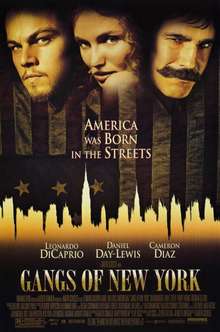
 Archbishop Hughes, and as New York State militia and some federal troops returned to New York, including the
Archbishop Hughes, and as New York State militia and some federal troops returned to New York, including the 152nd New York Volunteers, the 26th Michigan Volunteers,
152nd New York Volunteers, the 26th Michigan Volunteers, the 30th Indiana Volunteers and the 7th Regiment New York State Militiafrom Frederick, Maryland, after a forced march. In addition, the governor sent in the 74th and 65th regiments of the New York state militia, which had not been in federal service, and a section of the 20th Independent Battery, New York Volunteer Artillery from Fort Schuyler in Throgs Neck.
the 30th Indiana Volunteers and the 7th Regiment New York State Militiafrom Frederick, Maryland, after a forced march. In addition, the governor sent in the 74th and 65th regiments of the New York state militia, which had not been in federal service, and a section of the 20th Independent Battery, New York Volunteer Artillery from Fort Schuyler in Throgs Neck. The New York State militia units were the first to arrive. By July 16, there were several thousand Federal troops in the city. A final confrontation occurred on Thursday evening near Gramercy Park.
The New York State militia units were the first to arrive. By July 16, there were several thousand Federal troops in the city. A final confrontation occurred on Thursday evening near Gramercy Park. According to Adrian Cook's analysis in hisArmies of the Streets, twelve people died on the last day of the riots in skirmishes between rioters and the police and the army, including one African-American, two soldiers, a bystander and two womene exact death toll during the New York Draft Riots is unknown, but according to historian James M. McPherson (2001), at least 120 civilians were killed. At least eleven black men were lynched. The most reliable estimates also indicate that at least 2,000 people were injured. Herbert Asbury, the author of the 1928 book Gangs of New York, upon which the 2002 film was based, puts the figure much higher, at 2,000 killed and 8,000 wounded. Total property damage was about $1–5 million. Historian Samuel Eliot Morison wrote that the riots were "equivalent to a Confederate victory". The city treasury later indemnified one-quarter of the amount. Fifty buildings, including two Protestant churches, burned to the ground. On August 19, the draft was resumed. It was completed within 10 days without further incident, although far fewer men were actually drafted than had been feared: of the 750,000 selected for conscription nationwide, only about 45,000 actually went into service.
According to Adrian Cook's analysis in hisArmies of the Streets, twelve people died on the last day of the riots in skirmishes between rioters and the police and the army, including one African-American, two soldiers, a bystander and two womene exact death toll during the New York Draft Riots is unknown, but according to historian James M. McPherson (2001), at least 120 civilians were killed. At least eleven black men were lynched. The most reliable estimates also indicate that at least 2,000 people were injured. Herbert Asbury, the author of the 1928 book Gangs of New York, upon which the 2002 film was based, puts the figure much higher, at 2,000 killed and 8,000 wounded. Total property damage was about $1–5 million. Historian Samuel Eliot Morison wrote that the riots were "equivalent to a Confederate victory". The city treasury later indemnified one-quarter of the amount. Fifty buildings, including two Protestant churches, burned to the ground. On August 19, the draft was resumed. It was completed within 10 days without further incident, although far fewer men were actually drafted than had been feared: of the 750,000 selected for conscription nationwide, only about 45,000 actually went into service.
While the rioting mainly involved the working class, the middle and upper-class New Yorkers had split sentiments on the draft and use of federal power or martial law to enforce the draft.Many wealthy Democratic businessmen sought to have the draft declared unconstitutional. Tammany Democrats did not seek to have the draft declared unconstitutional, but helped pay commutation fees on behalf of those who were drafted.boss tweed

New York City's support for the Union cause continued, however grudgingly. By the end of the war over 450,000 soldiers, sailors and militia enlisted at New York City. 46,000 of them died during the war.The city's Irish and Excelsior brigades were among the six Union brigades with the most combat dead.Politically, the city was dominated by Democrats, many of whom were under the control of a political machine known as Tammany Hall. Led by William "Boss" Tweed, they gained numerous offices in New York City, and even to the state legislature and judges' seats,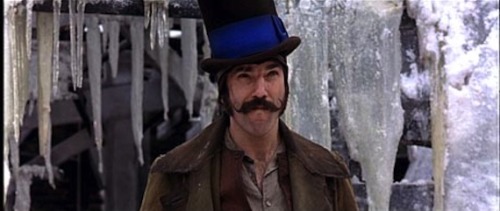 often through illegal means. From 1860–1870, Tweed controlled most Democratic nominations in the city, while Republicans tended to
often through illegal means. From 1860–1870, Tweed controlled most Democratic nominations in the city, while Republicans tended to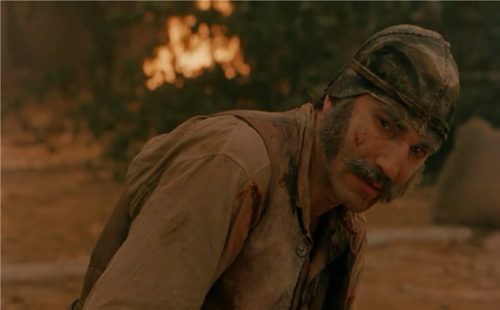 be more prevalent in upstate New York. Lincoln supporters in formed the Union League to support the war effort and the president's policies.
be more prevalent in upstate New York. Lincoln supporters in formed the Union League to support the war effort and the president's policies.
 often through illegal means. From 1860–1870, Tweed controlled most Democratic nominations in the city, while Republicans tended to
often through illegal means. From 1860–1870, Tweed controlled most Democratic nominations in the city, while Republicans tended to be more prevalent in upstate New York. Lincoln supporters in formed the Union League to support the war effort and the president's policies.
be more prevalent in upstate New York. Lincoln supporters in formed the Union League to support the war effort and the president's policies.
A series of U.S. Army forts, most constructed prior to the war, housed garrisons of Union troops, intent on 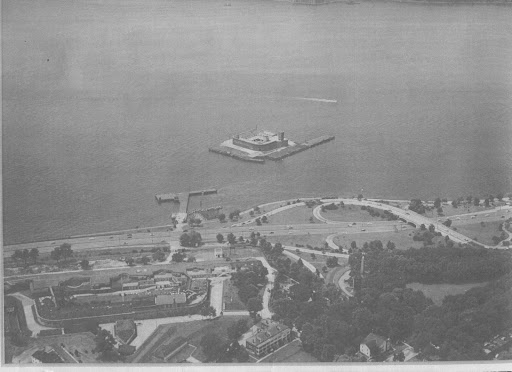 protecting New York Harborand the city from any possible Confederate attack, none of which ever came. Fort Lafayette,
protecting New York Harborand the city from any possible Confederate attack, none of which ever came. Fort Lafayette, Fort Schuyler,
Fort Schuyler, and several others eventually held hundreds of Confederates prisoners of war. The Army also
and several others eventually held hundreds of Confederates prisoners of war. The Army also established or expanded several large military hospitals, includingMacDougall Hospital and De Camp General Hospital,
established or expanded several large military hospitals, includingMacDougall Hospital and De Camp General Hospital, to serve the growing numbers of wounded and ill soldiers. Among the military innovations coming from New York
to serve the growing numbers of wounded and ill soldiers. Among the military innovations coming from New York City was the "wig-wag" system of signalling, tested in New York Harbor by Major Albert J. Myer.five points above
City was the "wig-wag" system of signalling, tested in New York Harbor by Major Albert J. Myer.five points above
 protecting New York Harborand the city from any possible Confederate attack, none of which ever came. Fort Lafayette,
protecting New York Harborand the city from any possible Confederate attack, none of which ever came. Fort Lafayette, Fort Schuyler,
Fort Schuyler, and several others eventually held hundreds of Confederates prisoners of war. The Army also
and several others eventually held hundreds of Confederates prisoners of war. The Army also established or expanded several large military hospitals, includingMacDougall Hospital and De Camp General Hospital,
established or expanded several large military hospitals, includingMacDougall Hospital and De Camp General Hospital, to serve the growing numbers of wounded and ill soldiers. Among the military innovations coming from New York
to serve the growing numbers of wounded and ill soldiers. Among the military innovations coming from New York City was the "wig-wag" system of signalling, tested in New York Harbor by Major Albert J. Myer.five points above
City was the "wig-wag" system of signalling, tested in New York Harbor by Major Albert J. Myer.five points above
Riker's Island was used as a military training ground for both white and African-American regiments  during the Civil War. New soldiers were trained at "Camp Astor," named for the millionaire John Jacob Astor III who provided funding for the army.
during the Civil War. New soldiers were trained at "Camp Astor," named for the millionaire John Jacob Astor III who provided funding for the army. Among the early regiments trained at Camp Astor was the Anderson Zouaves, commanded by Col. John Lafayette Riker, a descendant of the
Among the early regiments trained at Camp Astor was the Anderson Zouaves, commanded by Col. John Lafayette Riker, a descendant of the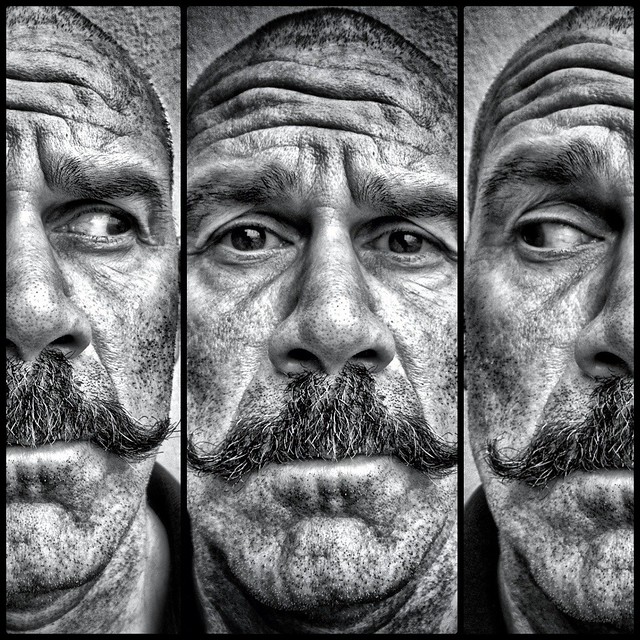 the butcher, family that owned the island, it was a New York volunteer regiment that served in the Union Army during the American Civil War.
the butcher, family that owned the island, it was a New York volunteer regiment that served in the Union Army during the American Civil War.
 during the Civil War. New soldiers were trained at "Camp Astor," named for the millionaire John Jacob Astor III who provided funding for the army.
during the Civil War. New soldiers were trained at "Camp Astor," named for the millionaire John Jacob Astor III who provided funding for the army. Among the early regiments trained at Camp Astor was the Anderson Zouaves, commanded by Col. John Lafayette Riker, a descendant of the
Among the early regiments trained at Camp Astor was the Anderson Zouaves, commanded by Col. John Lafayette Riker, a descendant of the the butcher, family that owned the island, it was a New York volunteer regiment that served in the Union Army during the American Civil War.
the butcher, family that owned the island, it was a New York volunteer regiment that served in the Union Army during the American Civil War.
*the Marx pieces above are maybe the best advancing troops ever made(It was raised under special authority of the War Department in New York City by Col. John Lafayette Riker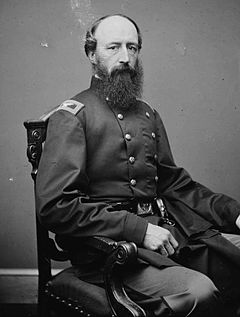 in May and June 1861, in
in May and June 1861, in 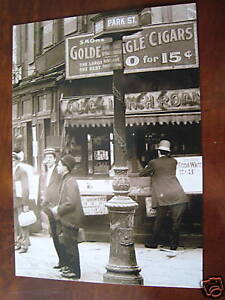 response to President Abraham Lincoln's call for 75,000 volunteers to suppress the insurrection in the rebellious
response to President Abraham Lincoln's call for 75,000 volunteers to suppress the insurrection in the rebellious  Southern states of the United States of America. The regiment was named in honor of, and raised under the auspices of, Major Robert Anderson, "the hero of Fort Sumter".
Southern states of the United States of America. The regiment was named in honor of, and raised under the auspices of, Major Robert Anderson, "the hero of Fort Sumter". The regiment was later numerically designated the Sixty-second New York State Volunteers.below peter cole mins
The regiment was later numerically designated the Sixty-second New York State Volunteers.below peter cole mins

 in May and June 1861, in
in May and June 1861, in  Southern states of the United States of America. The regiment was named in honor of, and raised under the auspices of, Major Robert Anderson, "the hero of Fort Sumter".
Southern states of the United States of America. The regiment was named in honor of, and raised under the auspices of, Major Robert Anderson, "the hero of Fort Sumter". The regiment was later numerically designated the Sixty-second New York State Volunteers.below peter cole mins
The regiment was later numerically designated the Sixty-second New York State Volunteers.below peter cole mins
The New York Navy Yard, established in 1801 in Brooklyn was a major facility for the manufacturing and repairing of Union Navy ships. By the second year of the Civil War, the Yard had expanded to employ about 6000 men. In addition to the government factories, hundreds of small private businesses throughout the New York area–'such as the National Arms Company– provided military accoutrements, supplies, sundries, and items of use and comfort to the soldiers.

No comments:
Post a Comment